GILBERTO ZORIO
GILBERTO ZORIO
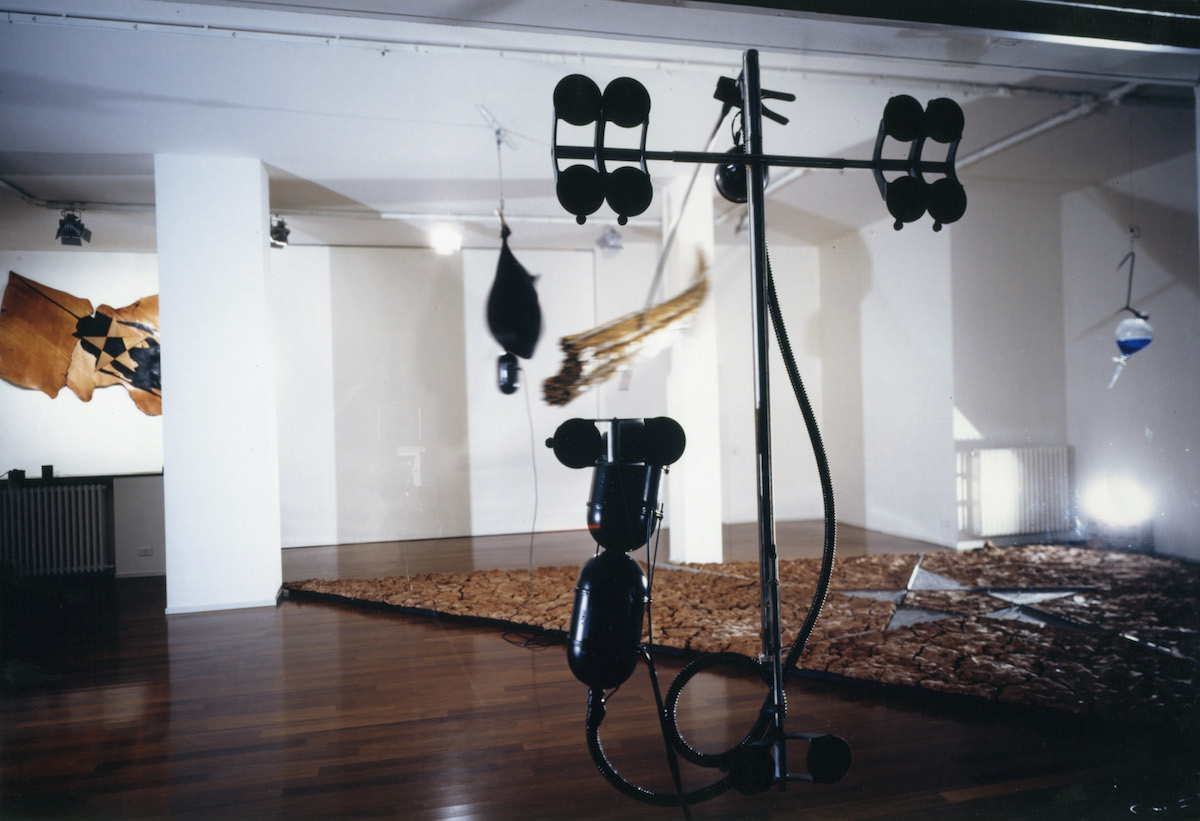
Biography
Gilberto Zorio was born in Andorno Micca in 1944, he lives and works in Turin. Among the pioneers of Arte Povera, his work is heterogeneous and “alchemical”. After the studies in Turin, he approached bronze sculpture working along foundries, paint factories and hardware. His research has been directed to highlight the expressive potential of industrial materials such as eternit, concrete, rubber and iron, enhancing their qualities of energy and tension. Since the mid-1960s, Gilberto Zorio has been focused on creating works in a constantly changing process, by renewing the language of sculpture far from its traditional stillness and heaviness. By activating chemical and physical reactions and occupying air and sound spaces, the works are involved in a life cycle for which time is an important component because only the passing of hours makes transformations visible. In Gilberto Zorio’s installations, neon lights, electric resistances and metallic sounds merge with archaic and heroic symbols such as the five-pointed star and the canoe.
Gilberto Zorio has been showing his work in numerous exhibitions with the Arte Povera group, and in personal projects such as: Museum of Contemporary Art – Castello di Rivoli, Turin (2017), MAXXI, Rome (2011), MACRO, Rome (2010), MAMbo, Bologna and Palazzo Frissioni, Bergamo (2009), Castillo de Santa Barbara, Alicante (2006), Institut Mathildenhöhe, Darmstadt (2005), Dia Center for the Arts, New York (2001), Italian Cultural Institute, Toronto (2000), Piazza del Plebiscito, Naples (1998), Civic Gallery of Contemporary Art, Trento (1996), Institute of Contemporary Art, Amsterdam, Centro Luigi Pecci, Prato, University of California, Berkeley and Musée d’Art Moderne et Contemporain, Nice (1992), Romolo Valli Municipal Theater , Reggio Emilia (1988), The Tel Aviv Museum and Stedelijk van Abbemuseum, Eindhoven (1987), Centre d’Art Contemporain, Geneva and Centre Georges Pompidou, Paris (1986), Württembergischer Kunstverein, Stuttgart (1985), Center of Contemporary Art, Syracuse (1983), Loggetta Lombardesca, Ravenna (1982), Stedelijk Museum, Amsterdam (1979), Kunstmuseum, Lucerne (1976). Gilberto Zorio also took part in prestigious international exhibitions: Venice Biennale (2013, 1997, 1995, 1986, 1980, 1978), Documenta, Kassel (1992, 1972), Sydney Biennale (1976), Rome Quadrenniale (2005, 1973).
Among the collective exhibitions in institutions: Philadelphia Museum of Art, Philadelphia and Parc Culturel de Rentilly (2018), Centro Luigi Pecci, Prato and GNAM, Rome (2017), The Museum of Modern Art, Oslo (2016), MoMA, New York (2013), Museo MADRE, Naples (2011), Institut d’Art Modern, Valencia (2009), Palazzo Grassi, Venice (2008), Museum of Contemporary Art – Castello di Rivoli, Turin (2007), The Estorick Collection, London (2005), Musée de Grenoble (2004), Museum of Contemporary Art, Sydney (2002), MAMAC, Nice (2000), Gallery of Modern Art, Bologna (1998), Kölnischer Kunstverein, Cologne (1997), Guggenheim Museum, New York (1994), Peggy Guggenheim Foundation, Venice (1993), Fundação de Serralves, Porto (1991), Royal Academy of Art, London (1989), Stedelijk Museum, Amsterdam (1980), The Art Institute, Chicago (1977), Kunstverein, Munich (1971), Städtische Kunsthalle, Düsseldorf. His collaboration with Galleria Fumagalli began in 2001 when the artist intervened in the gallery’s spaces by installing several works of his alchemical workshop. On the occasion a catalog was published with a text by Danilo Eccher and a collection of interventions by friends, artists, critics and the gallery owners. In 2005, in co-edition Galleria Fumagalli/Hopefulmonster, another volume is published to accompany Zorio’s exhibition in the halls of the Institute Mathildenhoe in Darmstadt.
Biography
Gilberto Zorio was born in Andorno Micca in 1944, he lives and works in Turin. Among the pioneers of Arte Povera, his work is heterogeneous and “alchemical”. After the studies in Turin, he approached bronze sculpture working along foundries, paint factories and hardware. His research has been directed to highlight the expressive potential of industrial materials such as eternit, concrete, rubber and iron, enhancing their qualities of energy and tension. Since the mid-1960s, Gilberto Zorio has been focused on creating works in a constantly changing process, by renewing the language of sculpture far from its traditional stillness and heaviness. By activating chemical and physical reactions and occupying air and sound spaces, the works are involved in a life cycle for which time is an important component because only the passing of hours makes transformations visible. In Gilberto Zorio’s installations, neon lights, electric resistances and metallic sounds merge with archaic and heroic symbols such as the five-pointed star and the canoe.
Gilberto Zorio has been showing his work in numerous exhibitions with the Arte Povera group, and in personal projects such as: Museum of Contemporary Art – Castello di Rivoli, Turin (2017), MAXXI, Rome (2011), MACRO, Rome (2010), MAMbo, Bologna and Palazzo Frissioni, Bergamo (2009), Castillo de Santa Barbara, Alicante (2006), Institut Mathildenhöhe, Darmstadt (2005), Dia Center for the Arts, New York (2001), Italian Cultural Institute, Toronto (2000), Piazza del Plebiscito, Naples (1998), Civic Gallery of Contemporary Art, Trento (1996), Institute of Contemporary Art, Amsterdam, Centro Luigi Pecci, Prato, University of California, Berkeley and Musée d’Art Moderne et Contemporain, Nice (1992), Romolo Valli Municipal Theater , Reggio Emilia (1988), The Tel Aviv Museum and Stedelijk van Abbemuseum, Eindhoven (1987), Centre d’Art Contemporain, Geneva and Centre Georges Pompidou, Paris (1986), Württembergischer Kunstverein, Stuttgart (1985), Center of Contemporary Art, Syracuse (1983), Loggetta Lombardesca, Ravenna (1982), Stedelijk Museum, Amsterdam (1979), Kunstmuseum, Lucerne (1976). Gilberto Zorio also took part in prestigious international exhibitions: Venice Biennale (2013, 1997, 1995, 1986, 1980, 1978), Documenta, Kassel (1992, 1972), Sydney Biennale (1976), Rome Quadrenniale (2005, 1973).
Among the collective exhibitions in institutions: Philadelphia Museum of Art, Philadelphia and Parc Culturel de Rentilly (2018), Centro Luigi Pecci, Prato and GNAM, Rome (2017), The Museum of Modern Art, Oslo (2016), MoMA, New York (2013), Museo MADRE, Naples (2011), Institut d’Art Modern, Valencia (2009), Palazzo Grassi, Venice (2008), Museum of Contemporary Art – Castello di Rivoli, Turin (2007), The Estorick Collection, London (2005), Musée de Grenoble (2004), Museum of Contemporary Art, Sydney (2002), MAMAC, Nice (2000), Gallery of Modern Art, Bologna (1998), Kölnischer Kunstverein, Cologne (1997), Guggenheim Museum, New York (1994), Peggy Guggenheim Foundation, Venice (1993), Fundação de Serralves, Porto (1991), Royal Academy of Art, London (1989), Stedelijk Museum, Amsterdam (1980), The Art Institute, Chicago (1977), Kunstverein, Munich (1971), Städtische Kunsthalle, Düsseldorf. His collaboration with Galleria Fumagalli began in 2001 when the artist intervened in the gallery’s spaces by installing several works of his alchemical workshop. On the occasion a catalog was published with a text by Danilo Eccher and a collection of interventions by friends, artists, critics and the gallery owners. In 2005, in co-edition Galleria Fumagalli/Hopefulmonster, another volume is published to accompany Zorio’s exhibition in the halls of the Institute Mathildenhoe in Darmstadt.
Exhibitions
SOLO EXHIBITIONS
GROUP EXHIBITIONS
Exhibitions
SOLO EXHIBITIONS
GROUP EXHIBITIONS

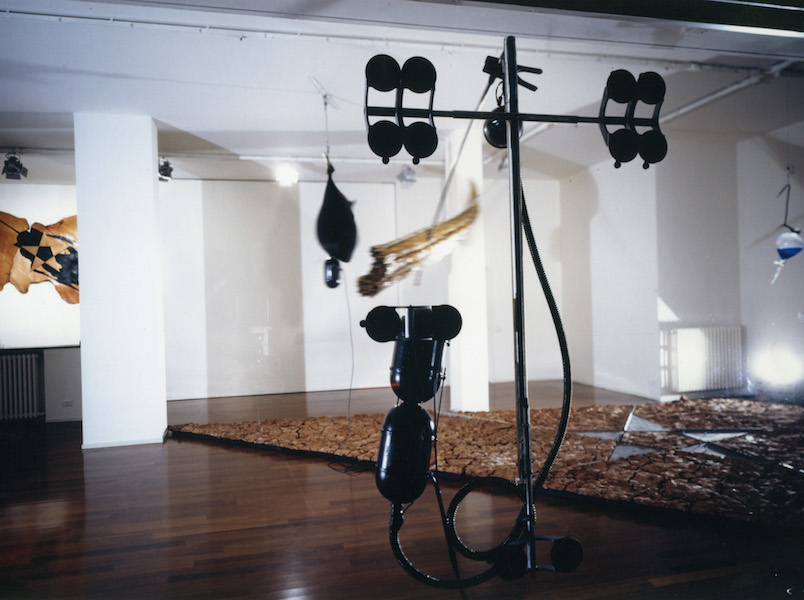
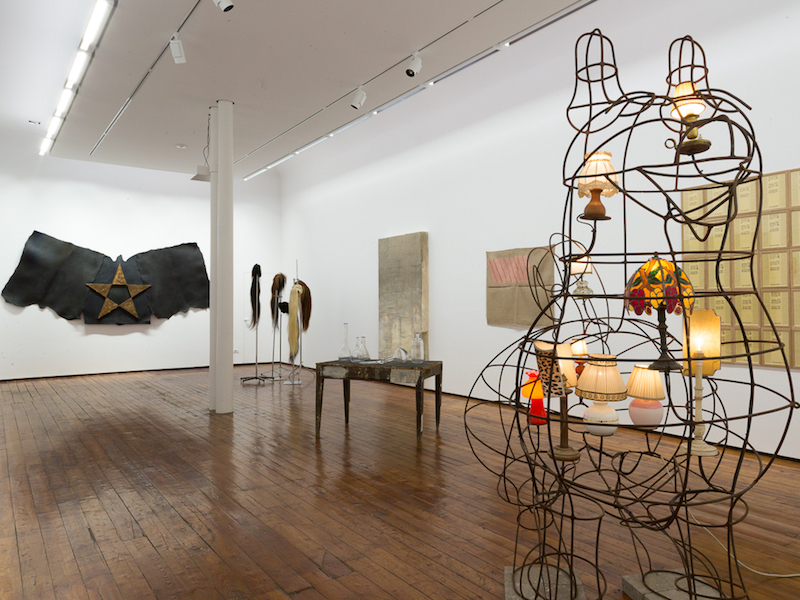
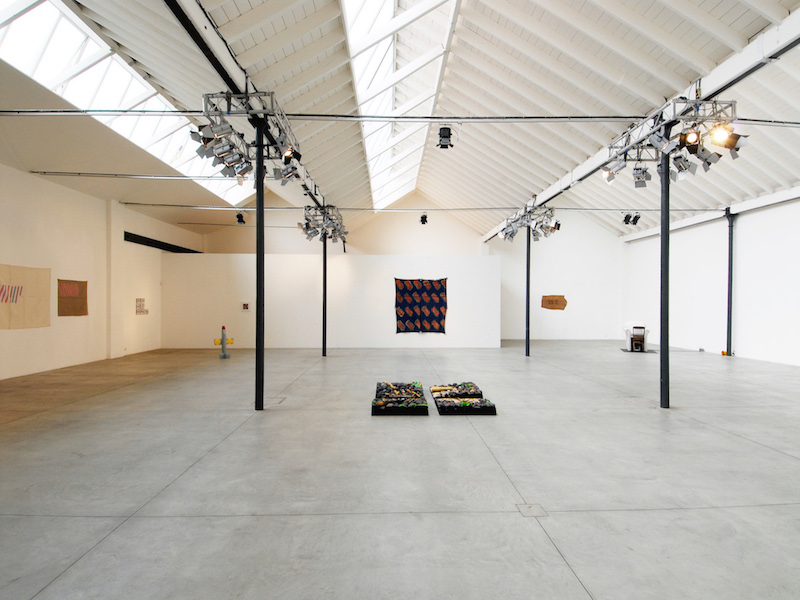
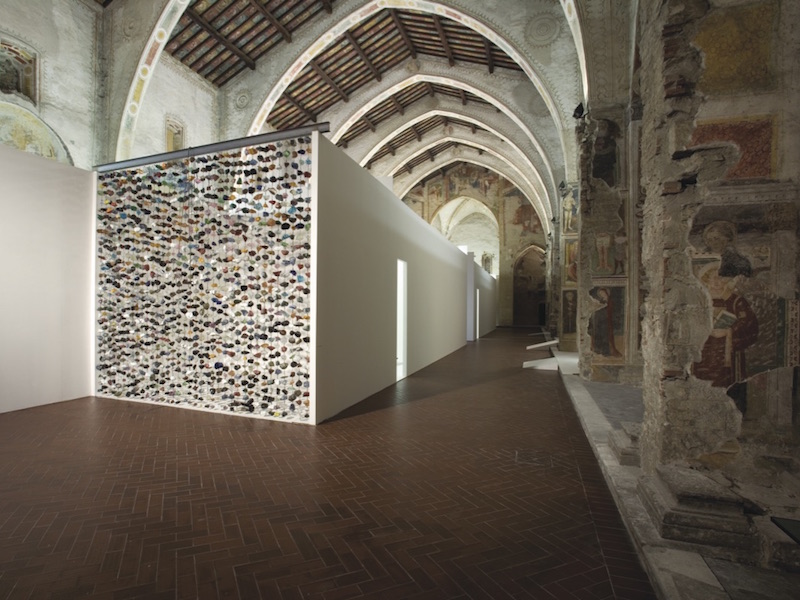
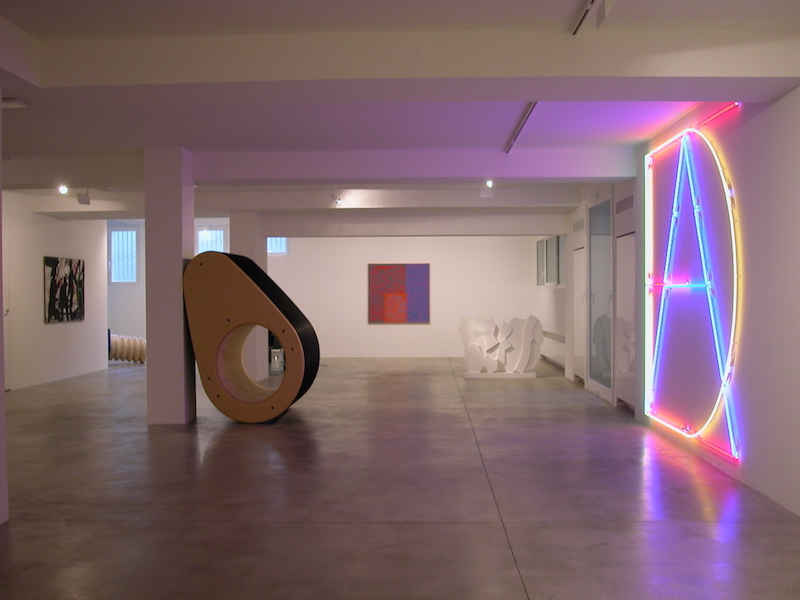


Progressive Jackpots, die von solchen Casinos angeboten werden, können unglaubliche Beträge erreichen,
während klassische Jackpots feste Geldbeträge bieten. Wenn sich Dein online Casino Bonus beispielsweise auf 10 EUR beläuft und
die Umsatzbedingung 20x ist, musst Du 200 EUR setzen, bevor Du das Geld
abheben darfst. Die besten sind seit mehreren Jahren tätig und produzieren innovative Spiele, bieten ein unvergleichliches Spielerlebnis.
Die besten Online Casinos bieten auch attraktive Treueprogramme an und organisieren Turniere, bei denen Spieler
gegeneinander antreten, um Sonderpreise, Bonus Spins oder Bargeld zu
gewinnen. Ein weiterer attraktiver Anreiz sind Freispiele, denn damit
hat man die Chance das Beste der Video-Slot-Spiele zu erleben und zu
gewinnen, ohne sein eigenes Geld einsetzen zu müssen. Deshalb ist es wichtig, dass Du ausschließlich Angebote von sicheren Casinos
in Anspruch nimmst.
Wir empfehlen, mit den neuesten Veröffentlichungen auf unserer Plattform zu
beginnen –diese Spiele bieten häufig Bonusrunden, einzigartige Grafiken und höhere Auszahlungsraten. Energy Casino
hält sich strikt an die geltenden Geldwäschevorschriften und garantiert sichere Transaktionen ohne versteckte Gebühren. Mit RTP-Werten zwischen 94% und 98% bieten die Casino Slot Games faire
Gewinnchancen für jeden Spielertyp. Dank der Malta Gaming Authority Lizenz können Spieler diese Belohnungen in einem sicheren Umfeld genießen. Das Willkommenspaket umfasst bis
zu 400€ Bonus plus 100 Freispiele, während das Treueprogramm mit wöchentlichen Reload-Boni
und exklusiven Turnieren lockt.
References:
https://online-spielhallen.de/rizk-casino-mobile-app-dein-spielvergnugen-fur-unterwegs/
Dadurch stellen Sie sicher, dass Sie berechtigt sind und problemlos zu Sonderangeboten gelangen können. Jeder Deutsch Benutzer, der an Werbeaktionen im Frank Casino teilnehmen möchte, muss ein paar einfache Schritte befolgen, um
sich zu registrieren. Hier finden Sie eine Schritt-für-Schritt-Anleitung, um mehr Boni zu erhalten und den Anmeldevorgang optimal
zu nutzen.
Die Mitarbeiter stehen zwischen 8 Uhr und 24 Uhr auf deutsch per Live Chat zur
Verfügung. Einen Bonus ohne Einzahlung, so wie ihn vielleicht andere neue Online
Spielotheken anbieten, gibt es bei Frank
Casino online derzeit nicht. Einen Frank Casino Promo Code wird nicht benötigt, wenn Du dich entscheidest, ein Spielerkonto anzulegen und den Willkommensbonus in Anspruch zu nehmen. Der Willkommensbonus gilt auf die ersten drei Einzahlungen und jeweils nur einmal pro Haushalt.
Diese gibt es in unterschiedlicher Anzahl, abhängig davon, wieviel Du Dich
entscheidest, bei Frank Casino online einzuzahlen. Teil
des Willkommenspakets sind auch Freispiele.
References:
https://online-spielhallen.de/ihr-ultimativer-leitfaden-fur-lucky-dreams-casino-bonus-codes/
Players must complete account verification during the registration process to
access these casino promotions. New Australian members receive a substantial welcome bonus structure across
their first five deposits. We maintain comprehensive data privacy
protocols to protect your personal information throughout your gaming experience.
We also provide access to professional gambling support services and educational resources about responsible gaming practices.
We implement industry-standard SSL encryption across our entire platform to protect
all player communications and transactions. Our mobile interface prioritises user-friendly casino navigation with enlarged buttons and
simplified menus.
This casino is safe for players, lets them withdraw money quickly, and has fair
games. Yes, players can sometimes get 20 free spins with no deposit or 20 free spins deals.
The no deposit bonus lets new and existing players claim free spins or chips without depositing money.
There isn’t an official stay casino app to download, though.
We also follow responsible gaming rules and give players tools and information to help them stay in control of their
gambling.
References:
https://blackcoin.co/18_what-is-a-high-roller-at-a-casino-what-high-roller-actually-means_rewrite_1/
The number of games, variants, and software providers varies from
one casino to the next. Trusted providers are essential for a
high-quality online live casino experience. Spread your gaming sessions throughout the
week to maximise the value of the 10% cashback offer, which puts money
back into your pocket.
You’ve got options like cryptocurrency, PayID, and
e-wallets including Jeton and MiFinity, all known for working well at fast withdrawal casinos.
You can play blackjack, roulette, and baccarat with real dealers in real time, streamed straight to your phone or laptop.
Compared to land-based casinos in Australia, the difference is vast.
The good news is there’s nothing stopping you from joining international or crypto casinos that accept
Aussies. Here’s what we look at before adding any site to our
list of the best Australian casino sites.
Click here to learn more about the casino games available
at Australian online casinos. The top online casinos optimise their
platforms for mobile, offering apps or browser-based
gaming. The Interactive Gambling Act 2001 bans local companies from offering online casinos to Aussies, but offshore sites
like Joka Casino and Wolf Winner operate legally under international
licenses.
References:
https://blackcoin.co/m99-casino-a-comprehensive-review/
Complete the quiz 3 times in a row (no wait time) to earn 30
points total. Each correct answer earns 10 Microsoft
Rewards points. Use the verified answers from the table above.
Connect with our customer service representatives to help
resolve your issue and get back on track. See a list of all upcoming USPS holidays and events.
Rolling estimate based off of electronic documentation of mail and package items
accepted, or received premailing notification, by the U.S.
USPS will be closed on Thursday, December 25th in observance of Christmas Day.
Just select the mail routes you want to target and let USPS hand-deliver your mail to
every door along the way.
References:
https://blackcoin.co/asino-play-online-casino-games/
Completing this process upon account creation and deposit ensures swift withdrawals, avoiding the 3-5 business day processing time.
The casino doesn’t charge deposit fees but keep an eye out for potential fees from your payment provider.
These titles break away from the standard pokies and table games offering an experience not unlike popular video games.
At the time of this review, Ozwin Casino had no live dealer games in its
catalogue.
Select eZeeWallet as the preferred deposit method4.
Keep the deposit page open until the transfer is confirmed
Paste the casino’s Bitcoin address into the “Send to” field8.
The customer support service operates 24/7, even on weekends and holidays.
While Ozwin Casino doesn’t charge deposit fees, service providers
might, so please be aware of any transaction charges. Gaining
access to your Ozwin Casino account is a quick and straightforward process.
References:
https://blackcoin.co/black-jack-strategy-poker/
us online casinos paypal
References:
ahrs.al
paypal online casinos
References:
http://www.livorise.com
online slot machines paypal
References:
https://visahr.in/employer/play-paypal-pokies
paypal casinos
References:
tripleoggames.com
usa casino online paypal
References:
bhakticonsultaants.com
best online casino usa paypal
References:
https://didiaupdates.com